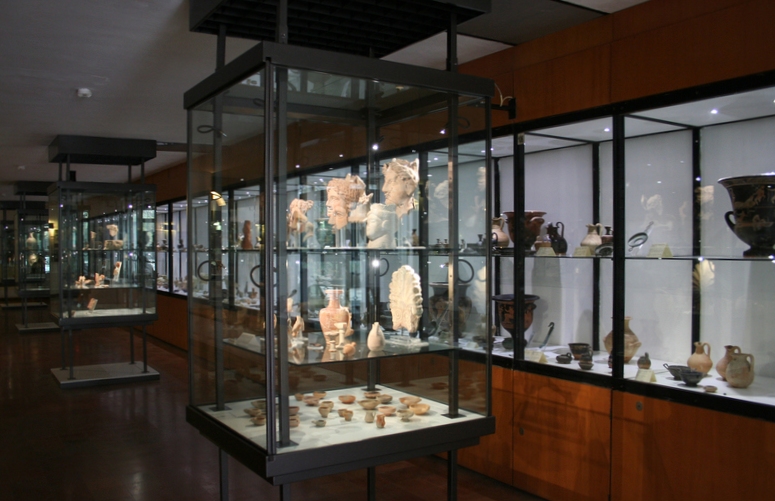The place
The history of the Agrigento province continues in Room XIV, where artifacts from four sites are displayed, bearing witness to the long process of Hellenization that spread from the coast inland: Montagnoli, Eraclea Minoa, Monte Adranone, and Rocca Nadore.
The first display case contains finds from Montagnoli di Menfi, a site that has been inhabited since the second half of the 8th century BC, including beautiful fragments of indigenous pottery with impressed decoration, which chronologically follow on from the archaeological finds in the previous room. Much of the exhibition in this room is devoted to Eraclea Minoa, a Selinunte foundation from the 6th century BC, located at the eastern mouth of the Platani River (ancient Alykos), which soon entered the political sphere of Akrágas, forming an outpost against the Carthaginians settled in the westernmost part of the island. Excavations have brought to light the Hellenistic and Roman city, with monumental remains of considerable importance, such as the theater and the residential area, and a necropolis that has yielded materials dating back to the time of the Greek foundation. The display cases contain a number of funerary objects dating from the 6th to the 3rd century BC and numerous materials from the settlement: Hellenistic oil lamps, handles from transport amphorae with stamped marks; also of considerable importance is a fragment of a large vase with the figure of a telamon which, in its configuration, reproduces those placed outside the temple of Olympian Zeus in Akrágas. Of interest are the four helmets, among the few finds of this type in the museum, of Greek and Roman origin.
Near Sambuca di Sicilia, on Mount Adranone, stands the center identified with the Adranon mentioned by Diodorus, which was of extreme strategic importance because it was located at the meeting point between the Sican and Elymian-Punic spheres of influence.
The center, active from the 8th to the 3rd century BC, is of great interest for its indigenous artifacts (such as oinochoai with geometric and bird decorations), mixed with Greek and Punic ones, which are particularly evident in the artifacts from the sanctuaries.
The grave goods from tomb 3 deserve a special mention. The tomb was found in the necropolis located on the southern slopes of the mountain and characterized by various types of burials. The tomb is underground and dates back to the period when the necropolis was in use in the 6th-5th centuries BC, followed by the period of box tombs in the 4th century BC. Among the other artifacts, the bronze finds stand out for their taste and workmanship.
Another site is Rocca Nadore, near Sciacca, the site of a Hellenized indigenous center with military functions, dating back to the 4th-3rd centuries BC. From the same area, specifically from the Fossillo plain, comes a beautiful marble head of Pan from the Roman period.
Recently, some finds from the site of Vito Soldano, near Canicattì, have been added to the exhibition. A thermal building was excavated there, connected to a settlement of which traces have been found, dating back to the Constantinian era (between the end of the 3rd century and the beginning of the 4th). The various types of finds cover a wide time span, from the classical period to the early Christian and late antique periods.



